Exhibition information
Out of the Blue - Aus heiterem Himmel
James Benning, Paco Fernandez, Thomas Florschuetz, Kuno Gonschior, Mary Heilmann, François Morellet, Bruce Nauman, François Perrodin, Günter Umberg, Elisabeth Vary, Caroline von Grone, Peter Wegner
The German idiom 'aus heiterem Himmel' has a literally different meaning than the English 'out of the blue' as the word 'Himmel' signifies 'sky' or 'heaven' - however, this alluds to the colour 'blue' and vice versa. Thus, they are quite close to each other.
But the German version adds an important detail, which is conveyed in the word 'heiter', meaning not only bright and clear, but also carefree, cheerful, smiling...If something happens out of the blue, it stands in opposition to the happy state before. There is a rupture, sudden change, serious momentum. The saying signifies it in a slightly ironical and sometimes even bitter taste, and is thus used to express dramatic incidents. However, at the same time there remains the lighter version insofar as what comes out of a hopeful blue can also transmit something of precisely that so to speak blue hope: childlike naivety or creative simplicity. Both allude to the blue sky in a metaphorical sense as the sky's endless space signifies ideas such as eternity, infinity, and mental openness - receptivity.
Thus, the title 'Out of the blue' gained a very special life on its own. Less in terms of its literal aspects, but rather in the sense of becoming open for unexpected happenings, senses, pictures or relations - a kind of freeness, a sort of expedition towards the yet unknown.
A curator's perspective is often dominated by all too clear concepts and bound to a long history of programatic concepts of art institutions. In consequence, there can be nothing more exciting for the gallery than an unexpected change of the curatorial perspective. This came to be the most refreshing, important experience.
The exhibition refers to both the English as well as German literal meaning (Blue|Himmel), as well as to the idiomatic sense of 'Out of the Blue' and 'Aus heiterem Himmel', which describes something either as extremely positiv|funny or rather negative|critical surprise.
Slow motion
James Benning, 13 Lakes, Film in research
"It is perhaps because James Benning's work is so resistant to neat categorisation that his films have rarely received the recognition they deserve. His work fuses elements of American structuralism, the narrative avant-garde and experimental documentary.
A hugely helpful introduction to Benning's filmmaking, the documentary established his painstaking method of visiting a space and experiencing, absorbing and evaluating its particular geography. Accompanying him during the making of his newest work 13 Lakes, we see the care and time with which he frames each shot, and the process of filming on 16mm and recording the sound on tape. We hear Benning articulate his filmmaking approach and method (“looking and listening”), while the camera observes him filming views of different lakes. Breathtaking wide shots of the American desert landscape reference but do not mimic or copy Benning's work. It's easy to understand why: once we see a 13 Lakes workprint shot of a vista, we realise that though the video shots look good, they are utterly eclipsed by the depth and tone captured by the film, particularly in the rippling sapphire of the water and chalky whiteness of the rocks. (...)
With his mathematics background, his structuralism manifests in the invocation of rigorous compositional logic – the films of the California trilogy, for example, being composed of 35 shots of 2.5 minutes length – “pose questions” and “solve problems”. Benning's long takes therefore become understandable as an authorial strategy for the organisation of documentary materials and for interrogating the act of seeing. After several minutes of looking at a single shot, the effect on the viewer is powerful. The formal elegance of the compositions somehow becomes surreal over time, as we look into, instead of at, the place. This tendency locates Benning in the history of experimental filmmakers concerned with interrogating visual perception.(...)" Danni Zuvela: Talking about seeing: A conversation with James Benning, in http://www.sensesofcinema.com/contents/04/33/james_benning.html
From the sea
Paco Fernandez - acrylic blue on wood precisely draws out the colour of ocean and sky under a summer's brightness - the 'heiter' element itself, the easy and not yet defined moment before a later possibly new=foreign=menacing event out of the blue... Hence the title 'untitled'. Following this interpretation, it should be read as the artistic intention to offer only the intitial starting point for anything that might come out of the blue images, and of course, in an individual way for each recipient.
Form the sky
Thomas Florschuetz - in his new work entitled 'Valkyrie' Florschuetz undertakes a photographic statement, which juxtaposes the silkyness and wideness of the sky with the cool elegance of functionalism and technology, symbolised by an airplane. However, the title points to an ancient nordic myth, and thereby breaks both the technoid world of modernity as well as the bright (heiter) sky. At second view, the images reveal their lightness as something ominous, something threatening in a transcendent manner. This is because the work refers to the mythological story of the ghost women. She selects some of the dead bodies of the soldiers, who have been killed in action for the 'Wallhalla' ('Walküre', an Oper by Wagner, 'Valkyrie', the film by Singer). Via the airplane this historical intervention is then again linked with present time military traditions such as awards for the bravest men etc. For the spectator, this suttle seriousness and moral aspect clearly arrives out of the blue in the sense of the expression's ironical sound.
An unexpected rediscovery
Kuno Gonschior - paintings here combine the complementary colours red and green, which enforce each other. This visual experience is further strengthened by the use of fluorescent colours. As a result, extreme 'Vibrations' are triggered in the human eye. They exemplify how traditional methods such as after effects can still create new excitement provided that they are playfully juxtaposed with other media. Then, Gonschior's 1966 images appear in a new and zeitgeisty light. It is the confrontation of different works intuitively out of the blue, rather than in a planned and rational choice, which allows the interesting discovery; an discovery that itself demands an open view in order to receive its vibrations.
The neccessary antagonism
Mary Heilmann - the most blue wonder probably arrives in the confrontation with Mary Heilmann's red image, in fact a 'Red Tile Piece'. Other works, for instance her 'Chair', offer the humour that might come with what happens out of the blue, again in the ironic sense, because it oscillates between emergency state and everyday life. However, such opposing moments would not only perfectly fit the exhibition's motive (and motivation), but also demonstrate and enact its real nature.
The perfection of coincidence
François Morellet -In the work of the famous french artist, the perfect form of the white square serves as base for five pretended randomly combined bright red neontubes. The imperfection of these vernacular objects is stressed by the visible electric connections of the tubes, that build one particular out of of many possible combinations on the square. Morellet about his works: "I have reduced my intervention, my creativity and my sensibility (I hope) to a minimum and I can consequently announce that everything yhat you find, apart from ma small sastems (and if this were nothing) belongs to you as observer. (François Morellet, Cholet, 1972)
Handmade
Bruce Nauman - "No matter how directly, indirectly, ambivalent, or flippantly Bruce Nauman has treated the subject, the "hand" of the artist has been a persistent and serious issue in his work. (...) The pairs of hands are at play, posing in different configurations as different edges abut and fingertips touch to form a hole (or holes as the case may be)." The drawing, that is to be seen in the exhibition captivates because of its playful, flippant but at the same time topological presence. A literally accidentally discovered speciality.
Joan Simon, Bruce Nauman Fingers and holes, in: Bruce Nauman Fingers and holes, Los Angeles, 1994, p.3
Perception as a process
François Perrodin - "48.1" is the modest title of the glass work by Perrodin. The deep-black, reflective surface guides the look of the suprised viewer at first - to himself. On closer inspection, it becomes evident, that the work shows much more than sheer reflections. His work is "unstable, sensitive, and reactive...or rather, it's perception is always instable, sensitive and reactive. (...) The presence of reflection already bore the idea of a kind of reactivity, of a possible modification of viewpoints through the constitution of an instantaneous trace of the viewer and the place. Multiplicity of possible contexts in the mobility of objects, multiplicity also in the movements of the viewers, multiplicity again in the variations of the numerous givens of a particular environment defining the setting of or perception." (Francois Perrodin, 1995)
Something uncommon - for us
Elisabeth Vary's and Günter Umberg's works are relating to painting as an object which unfolds spatial being.
"Umberg and Vary assert the same need to act on colour through chromatic synthesis, distances, matchings, closenesses and magnetisms based on differences. While it is true that painting establishes its cognitive truth through an ideational genesis that sees it in relation to the place where it is located, it may be stated that Vary's and Umberg's artistic inquiries express their awareness of this relationship insofar as it is the capacity to conceive the work as specifically linked to the character of the exhibition space inseparable from it. It is their belief that the painted colour can be interpreted differently according to the space it occupies and in relation to the spectator's position, and in this sense the surface of the painting acquires body, tension and depth on the surface of the wall, which itself obtains a new identity."
This is the intention guiding the path of interpretation on which Umberg's thought and Vary's ideas interact, on the basis of the expansive sensorial capacity of the colour-form. The dialogue is a methodology allowing the artists to enter a vaster dimension, where every pictorial element - even though it occupies clearly defined spaces - participates in a common flow of perceptive instants in the continuity of space." Claudio Ceritelli, in contemporaryarts, Publi Paolini, 2007, Mantova, p.6
"Günter Umberg has been exploring the expressive possibilities of monochrome and the fruitful dialogue between the work itself and the space chosen to house it. (...) The different reflections of light and saturation of the pigmented surface, together with the changes in location and the perceptual sensitivity of the viewer, mean that the work undergoes a continuous metamorphosis." Elisabetta Pozzetti, in contemporaryarts, Publi Paolini, 2007, Mantova, p.62
Günter Umberg numbers among the most important proponents of so-called 'Radical Painting', a school of painting that has built on the development of concrete painting since the late 1960s. His black paintings in particular not only take up questions regarding the possibilities of monochrome painting, but also establish an intensive spatial reference on the basis of their nuanced clacks, which Günter Umberg further reinforces through the carefully thought out hanging of his works." Brigitte Baumstark, Dorothea Strauss, Günter Umberg, Ringier, 2000, Zurich, p.65
"Günter Umberg often plays special attention not only to relating the work to the exhibition space, but also to the way it relates to the wall where it is displayed. (...) We can see how the picture is attached to metal hooks that distance it from the wall, causing it to be tilted. Other shots dwell on the sides of the works, which are often raised because the picture consists of a thick wooden base to which the paint is applied. Thus the artist allows us to sense the materiality of the work, its physicallness, its existence as a thing among concrete things and the relationship it creates with real space. We see how the picture becomes materially part of the wall and how it protrudes from it. In metaphorical terms, we could say that the work possesses energy that emanates from its body until it is shifted from the flat dimension of the wall and is driven towards space, changing the very characteristics of its setting." Giorgio Verzotti, in Günter Umberg, A arte Studio Invernizzi, 2008, Milano, p.15
"Elisabeth Vary reconciles the power of instinctive, impetuous and stratified gestural painting with the precision of the cardboard volumes that she makes herself. The antithetic and, at the same time, dialectic dialogue between the potentialities of colour - which are exploited to the maximum - and the apparently silent immobility of the supports anchored to the wall involve two other protagonists of her works: light and space. They both act on the works, increasing the reverberation of the colours on the milky white of the walls and interrupting the vision of them through sparing use of the available space." Claudio Ceritelli, in contemporaryarts, Publi Paolini, 2007, Mantova, p.63
Visual research
Caroline von Grone - says about her way of painting, which she understands as a kind of "visual research": "What looks unprepossessing in reality or flat in a photo can acquire enormous depth in a painting". "The artist's paintings are not photo-realistic reflections of reality, but rather complex, multi-layered reflections on reality, composed with painterly means. Caroline von Grone employs painting, to borrow a phrase from the painter and critic Hans Platschek, as "an instrument (...) to denote reality beyond its fractures and particles - or with its fractures and particles." Claudia Herstatt, Depiction without fiction and Belinda Grace Gardner, Reflexes of an extended reality, in: Caroline von Grone, Frisch Gestrichen, Düsseldorf, 2005, p. 12 resp. p. 19
A problem of poetry Peter Wegner - “A colour is one thing. A name is another (...) The problem of naming colours is the problem of poetry. How to describe one thing in terms of another.” Wegner uses paint chips the named and numbered samples that one finds in paint stores, as a point of departure in his work. But this is not simply an exploration of colour; it relates much more to the study of systems that preoccupied the conceptual artists of he 60s and 70s. Language is an important element in Wegner’s work and the names of the colours he depicts are carefully chosen. The seemingly abstract appearance of Wegner’s paintings (they appear to be hard-edged geometry) are more than formal studies and arrangements. Wegner is a collector.” “In all his works Wegner has been interested in the place where language and visual art merge. He has made works of that explore typography, the patterns of security envelopes as well as works that reproduce the different colour blues represented by the dot patterns in the skies commercial billboards. What at first appears to be an obvious example of found poetry reveals itself to be a complex study of nature, language and the systems that order the world.” Griffin Contemporary, Los Angeles
The German idiom 'aus heiterem Himmel' has a literally different meaning than the English 'out of the blue' as the word 'Himmel' signifies 'sky' or 'heaven' - however, this alluds to the colour 'blue' and vice versa. Thus, they are quite close to each other.
But the German version adds an important detail, which is conveyed in the word 'heiter', meaning not only bright and clear, but also carefree, cheerful, smiling...If something happens out of the blue, it stands in opposition to the happy state before. There is a rupture, sudden change, serious momentum. The saying signifies it in a slightly ironical and sometimes even bitter taste, and is thus used to express dramatic incidents. However, at the same time there remains the lighter version insofar as what comes out of a hopeful blue can also transmit something of precisely that so to speak blue hope: childlike naivety or creative simplicity. Both allude to the blue sky in a metaphorical sense as the sky's endless space signifies ideas such as eternity, infinity, and mental openness - receptivity.
Thus, the title 'Out of the blue' gained a very special life on its own. Less in terms of its literal aspects, but rather in the sense of becoming open for unexpected happenings, senses, pictures or relations - a kind of freeness, a sort of expedition towards the yet unknown.
A curator's perspective is often dominated by all too clear concepts and bound to a long history of programatic concepts of art institutions. In consequence, there can be nothing more exciting for the gallery than an unexpected change of the curatorial perspective. This came to be the most refreshing, important experience.
The exhibition refers to both the English as well as German literal meaning (Blue|Himmel), as well as to the idiomatic sense of 'Out of the Blue' and 'Aus heiterem Himmel', which describes something either as extremely positiv|funny or rather negative|critical surprise.
Slow motion
James Benning, 13 Lakes, Film in research
"It is perhaps because James Benning's work is so resistant to neat categorisation that his films have rarely received the recognition they deserve. His work fuses elements of American structuralism, the narrative avant-garde and experimental documentary.
A hugely helpful introduction to Benning's filmmaking, the documentary established his painstaking method of visiting a space and experiencing, absorbing and evaluating its particular geography. Accompanying him during the making of his newest work 13 Lakes, we see the care and time with which he frames each shot, and the process of filming on 16mm and recording the sound on tape. We hear Benning articulate his filmmaking approach and method (“looking and listening”), while the camera observes him filming views of different lakes. Breathtaking wide shots of the American desert landscape reference but do not mimic or copy Benning's work. It's easy to understand why: once we see a 13 Lakes workprint shot of a vista, we realise that though the video shots look good, they are utterly eclipsed by the depth and tone captured by the film, particularly in the rippling sapphire of the water and chalky whiteness of the rocks. (...)
With his mathematics background, his structuralism manifests in the invocation of rigorous compositional logic – the films of the California trilogy, for example, being composed of 35 shots of 2.5 minutes length – “pose questions” and “solve problems”. Benning's long takes therefore become understandable as an authorial strategy for the organisation of documentary materials and for interrogating the act of seeing. After several minutes of looking at a single shot, the effect on the viewer is powerful. The formal elegance of the compositions somehow becomes surreal over time, as we look into, instead of at, the place. This tendency locates Benning in the history of experimental filmmakers concerned with interrogating visual perception.(...)" Danni Zuvela: Talking about seeing: A conversation with James Benning, in http://www.sensesofcinema.com/contents/04/33/james_benning.html
From the sea
Paco Fernandez - acrylic blue on wood precisely draws out the colour of ocean and sky under a summer's brightness - the 'heiter' element itself, the easy and not yet defined moment before a later possibly new=foreign=menacing event out of the blue... Hence the title 'untitled'. Following this interpretation, it should be read as the artistic intention to offer only the intitial starting point for anything that might come out of the blue images, and of course, in an individual way for each recipient.
Form the sky
Thomas Florschuetz - in his new work entitled 'Valkyrie' Florschuetz undertakes a photographic statement, which juxtaposes the silkyness and wideness of the sky with the cool elegance of functionalism and technology, symbolised by an airplane. However, the title points to an ancient nordic myth, and thereby breaks both the technoid world of modernity as well as the bright (heiter) sky. At second view, the images reveal their lightness as something ominous, something threatening in a transcendent manner. This is because the work refers to the mythological story of the ghost women. She selects some of the dead bodies of the soldiers, who have been killed in action for the 'Wallhalla' ('Walküre', an Oper by Wagner, 'Valkyrie', the film by Singer). Via the airplane this historical intervention is then again linked with present time military traditions such as awards for the bravest men etc. For the spectator, this suttle seriousness and moral aspect clearly arrives out of the blue in the sense of the expression's ironical sound.
An unexpected rediscovery
Kuno Gonschior - paintings here combine the complementary colours red and green, which enforce each other. This visual experience is further strengthened by the use of fluorescent colours. As a result, extreme 'Vibrations' are triggered in the human eye. They exemplify how traditional methods such as after effects can still create new excitement provided that they are playfully juxtaposed with other media. Then, Gonschior's 1966 images appear in a new and zeitgeisty light. It is the confrontation of different works intuitively out of the blue, rather than in a planned and rational choice, which allows the interesting discovery; an discovery that itself demands an open view in order to receive its vibrations.
The neccessary antagonism
Mary Heilmann - the most blue wonder probably arrives in the confrontation with Mary Heilmann's red image, in fact a 'Red Tile Piece'. Other works, for instance her 'Chair', offer the humour that might come with what happens out of the blue, again in the ironic sense, because it oscillates between emergency state and everyday life. However, such opposing moments would not only perfectly fit the exhibition's motive (and motivation), but also demonstrate and enact its real nature.
The perfection of coincidence
François Morellet -In the work of the famous french artist, the perfect form of the white square serves as base for five pretended randomly combined bright red neontubes. The imperfection of these vernacular objects is stressed by the visible electric connections of the tubes, that build one particular out of of many possible combinations on the square. Morellet about his works: "I have reduced my intervention, my creativity and my sensibility (I hope) to a minimum and I can consequently announce that everything yhat you find, apart from ma small sastems (and if this were nothing) belongs to you as observer. (François Morellet, Cholet, 1972)
Handmade
Bruce Nauman - "No matter how directly, indirectly, ambivalent, or flippantly Bruce Nauman has treated the subject, the "hand" of the artist has been a persistent and serious issue in his work. (...) The pairs of hands are at play, posing in different configurations as different edges abut and fingertips touch to form a hole (or holes as the case may be)." The drawing, that is to be seen in the exhibition captivates because of its playful, flippant but at the same time topological presence. A literally accidentally discovered speciality.
Joan Simon, Bruce Nauman Fingers and holes, in: Bruce Nauman Fingers and holes, Los Angeles, 1994, p.3
Perception as a process
François Perrodin - "48.1" is the modest title of the glass work by Perrodin. The deep-black, reflective surface guides the look of the suprised viewer at first - to himself. On closer inspection, it becomes evident, that the work shows much more than sheer reflections. His work is "unstable, sensitive, and reactive...or rather, it's perception is always instable, sensitive and reactive. (...) The presence of reflection already bore the idea of a kind of reactivity, of a possible modification of viewpoints through the constitution of an instantaneous trace of the viewer and the place. Multiplicity of possible contexts in the mobility of objects, multiplicity also in the movements of the viewers, multiplicity again in the variations of the numerous givens of a particular environment defining the setting of or perception." (Francois Perrodin, 1995)
Something uncommon - for us
Elisabeth Vary's and Günter Umberg's works are relating to painting as an object which unfolds spatial being.
"Umberg and Vary assert the same need to act on colour through chromatic synthesis, distances, matchings, closenesses and magnetisms based on differences. While it is true that painting establishes its cognitive truth through an ideational genesis that sees it in relation to the place where it is located, it may be stated that Vary's and Umberg's artistic inquiries express their awareness of this relationship insofar as it is the capacity to conceive the work as specifically linked to the character of the exhibition space inseparable from it. It is their belief that the painted colour can be interpreted differently according to the space it occupies and in relation to the spectator's position, and in this sense the surface of the painting acquires body, tension and depth on the surface of the wall, which itself obtains a new identity."
This is the intention guiding the path of interpretation on which Umberg's thought and Vary's ideas interact, on the basis of the expansive sensorial capacity of the colour-form. The dialogue is a methodology allowing the artists to enter a vaster dimension, where every pictorial element - even though it occupies clearly defined spaces - participates in a common flow of perceptive instants in the continuity of space." Claudio Ceritelli, in contemporaryarts, Publi Paolini, 2007, Mantova, p.6
"Günter Umberg has been exploring the expressive possibilities of monochrome and the fruitful dialogue between the work itself and the space chosen to house it. (...) The different reflections of light and saturation of the pigmented surface, together with the changes in location and the perceptual sensitivity of the viewer, mean that the work undergoes a continuous metamorphosis." Elisabetta Pozzetti, in contemporaryarts, Publi Paolini, 2007, Mantova, p.62
Günter Umberg numbers among the most important proponents of so-called 'Radical Painting', a school of painting that has built on the development of concrete painting since the late 1960s. His black paintings in particular not only take up questions regarding the possibilities of monochrome painting, but also establish an intensive spatial reference on the basis of their nuanced clacks, which Günter Umberg further reinforces through the carefully thought out hanging of his works." Brigitte Baumstark, Dorothea Strauss, Günter Umberg, Ringier, 2000, Zurich, p.65
"Günter Umberg often plays special attention not only to relating the work to the exhibition space, but also to the way it relates to the wall where it is displayed. (...) We can see how the picture is attached to metal hooks that distance it from the wall, causing it to be tilted. Other shots dwell on the sides of the works, which are often raised because the picture consists of a thick wooden base to which the paint is applied. Thus the artist allows us to sense the materiality of the work, its physicallness, its existence as a thing among concrete things and the relationship it creates with real space. We see how the picture becomes materially part of the wall and how it protrudes from it. In metaphorical terms, we could say that the work possesses energy that emanates from its body until it is shifted from the flat dimension of the wall and is driven towards space, changing the very characteristics of its setting." Giorgio Verzotti, in Günter Umberg, A arte Studio Invernizzi, 2008, Milano, p.15
"Elisabeth Vary reconciles the power of instinctive, impetuous and stratified gestural painting with the precision of the cardboard volumes that she makes herself. The antithetic and, at the same time, dialectic dialogue between the potentialities of colour - which are exploited to the maximum - and the apparently silent immobility of the supports anchored to the wall involve two other protagonists of her works: light and space. They both act on the works, increasing the reverberation of the colours on the milky white of the walls and interrupting the vision of them through sparing use of the available space." Claudio Ceritelli, in contemporaryarts, Publi Paolini, 2007, Mantova, p.63
Visual research
Caroline von Grone - says about her way of painting, which she understands as a kind of "visual research": "What looks unprepossessing in reality or flat in a photo can acquire enormous depth in a painting". "The artist's paintings are not photo-realistic reflections of reality, but rather complex, multi-layered reflections on reality, composed with painterly means. Caroline von Grone employs painting, to borrow a phrase from the painter and critic Hans Platschek, as "an instrument (...) to denote reality beyond its fractures and particles - or with its fractures and particles." Claudia Herstatt, Depiction without fiction and Belinda Grace Gardner, Reflexes of an extended reality, in: Caroline von Grone, Frisch Gestrichen, Düsseldorf, 2005, p. 12 resp. p. 19
A problem of poetry Peter Wegner - “A colour is one thing. A name is another (...) The problem of naming colours is the problem of poetry. How to describe one thing in terms of another.” Wegner uses paint chips the named and numbered samples that one finds in paint stores, as a point of departure in his work. But this is not simply an exploration of colour; it relates much more to the study of systems that preoccupied the conceptual artists of he 60s and 70s. Language is an important element in Wegner’s work and the names of the colours he depicts are carefully chosen. The seemingly abstract appearance of Wegner’s paintings (they appear to be hard-edged geometry) are more than formal studies and arrangements. Wegner is a collector.” “In all his works Wegner has been interested in the place where language and visual art merge. He has made works of that explore typography, the patterns of security envelopes as well as works that reproduce the different colour blues represented by the dot patterns in the skies commercial billboards. What at first appears to be an obvious example of found poetry reveals itself to be a complex study of nature, language and the systems that order the world.” Griffin Contemporary, Los Angeles
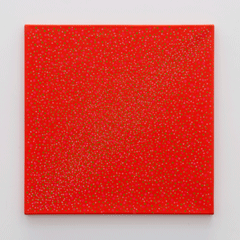
Kuno Gonschior, untitled, 1966, fluorescent colour on canvas, 70 x 70 cm
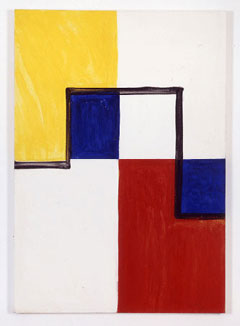
Mary Heilmann, M, 1985,
acrylic on canvas, 152,5 x 106,5 cm
acrylic on canvas, 152,5 x 106,5 cm
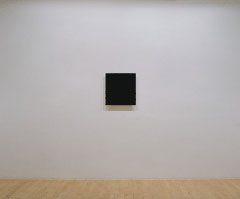
Günter Umberg, untitled, 2007/2008 colour on wood, 60,5 x 53,5 cm
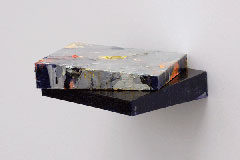
Elisabeth Vary, untitled, 2007/08, oil and acrylic on cardboard, 30 x 31 x 30,5 cm
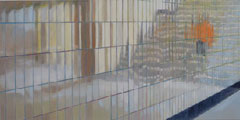
Caroline von Grone, Schatten meiner Selbst, 2007, oil on canvas, 122 x 244 cm
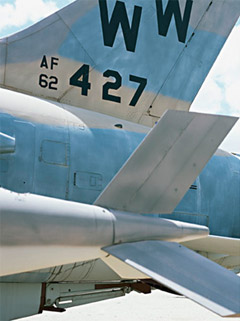
Thomas Florschuetz, untitled (Valkyrie), 2007, Cibachrome, 3 pieces,
each 183 x 137 cm
each 183 x 137 cm
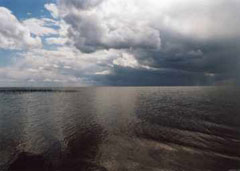
James Benning, 13 Lakes, video still, 2004
Sreening at the 23th August 2008
Sreening at the 23th August 2008
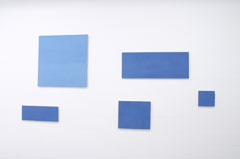
Paco Fernandez, untitled, 2004, acrylic on canvas, 30 x 28,5 cm, 48 x 23 cm, 29 77 cm, 100 x 1000 cm

Peter Wegner, Buildings made of sky, 2007, 32 colour photos, 162 x 265 cm
